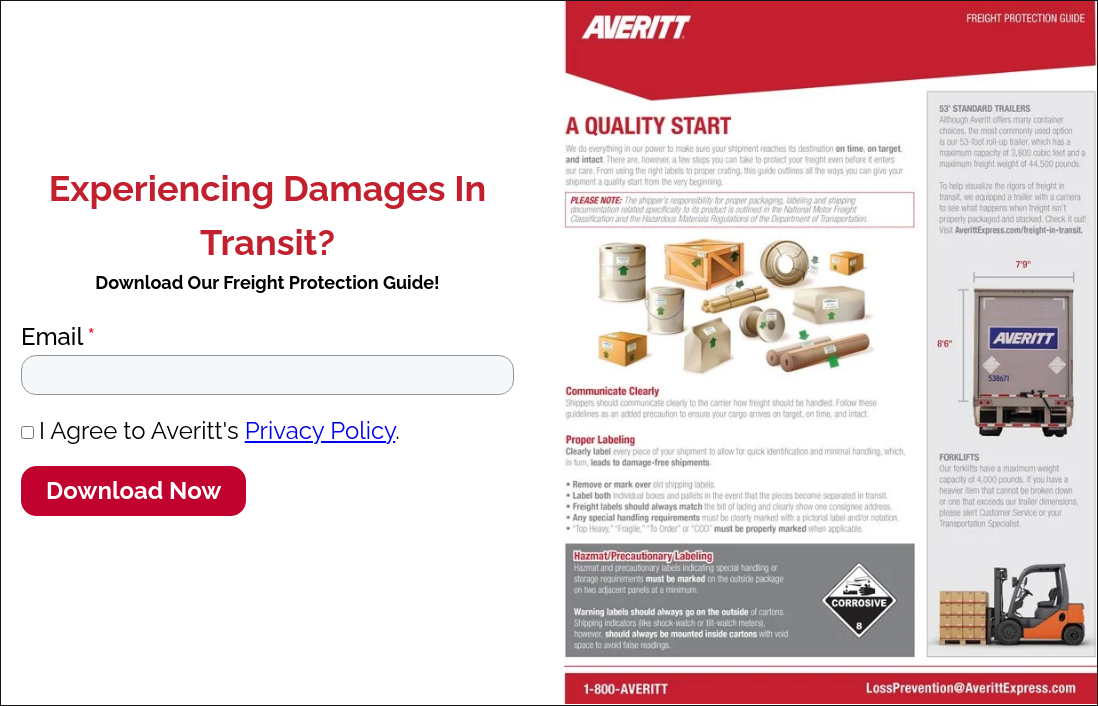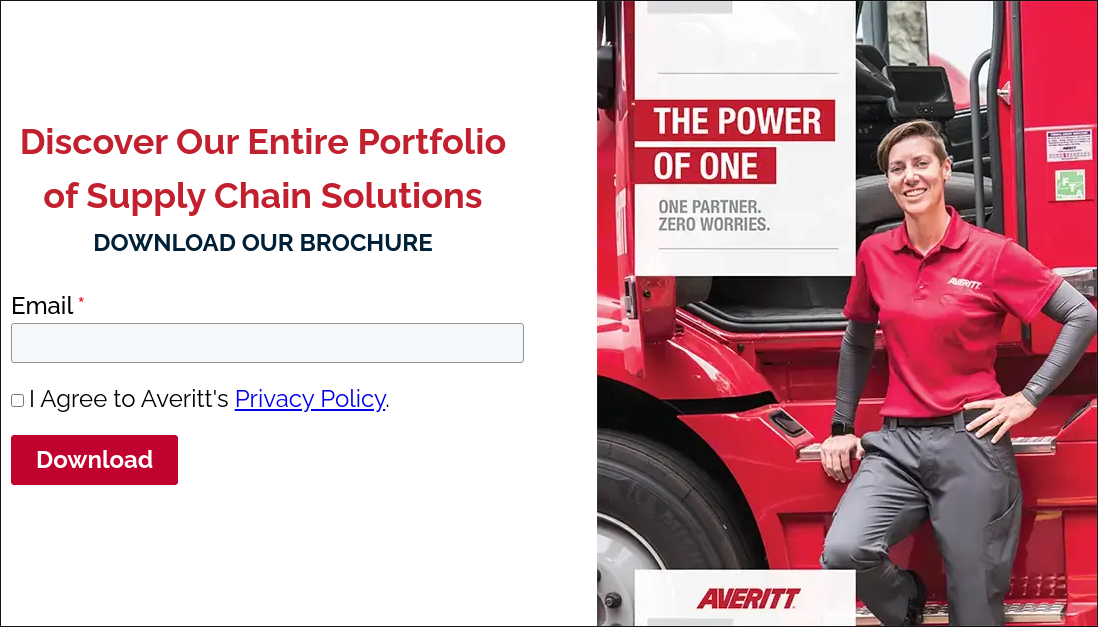Navigating the world of freight shipping can be daunting, especially for those new to the field. From a sea of acronyms to unique terminology to a maze of regulations, it's easy to feel overwhelmed. But the good news is that for most small business owners, there's only one shipping category they need to understand: Less-Than-Truckload, or LTL.
Understanding LTL Shipping
LTL shipping is a key method for transporting goods that is adaptable for various business needs. Unlike Full Truckload (FTL) shipping, which dedicates an entire truck to a single shipper's large load, LTL efficiently consolidates smaller shipments from various shippers into one truck.
This consolidation is a key aspect of Less-Than-Truckload (LTL) operations. It offers a versatile solution for businesses needing to ship smaller quantities of goods without the necessity of filling an entire truck. This flexibility is particularly advantageous for businesses with less predictable shipping schedules or those that need to send out shipments to multiple destinations.
Whether it's a small local business needing to send out batches of products regularly or larger companies looking to distribute goods to different locations without the need for full truckloads, LTL offers a solution that is both practical and efficient. By opting for LTL, shippers can benefit from reduced shipping costs, enhanced flexibility, and the ability to meet their logistical needs without the expense of hiring an entire truck for smaller loads.
Tip #1 - Plan and Consolidate Shipments
The key to efficient LTL shipping is the strategic planning and consolidation of your freight. This process involves grouping multiple smaller shipments into a single, larger shipment. Such consolidation offers several advantages, key among them being cost-effectiveness. When smaller shipments are combined, the overall cost of shipping per unit is often reduced compared to sending each item individually. This approach not only saves money but also simplifies the management of shipments.
Another benefit of freight consolidation is the reduced risk of damage or loss. Each time a shipment is loaded or unloaded, it’s susceptible to potential damage – so minimizing these touchpoints is crucial. Fewer handling steps mean there’s less chance of mishandling or misplacing individual items during transit.
That doesn’t mean that LTL consolidation is always the right solution. Sometimes, especially when dealing with a large number of consolidated shipments, opting for Full Truckload shipping could be more economical. This transition from LTL to FTL can happen when the volume and frequency of your consolidated shipments increase to a point where they can fill an entire truck. In such cases, FTL shipping can offer a more cost-efficient and direct shipping solution.
Tip #2 - Optimize Packaging
The importance of effective packaging in LTL shipping can’t be stressed enough. LTL shipments are unique in that they’re typically handled and moved multiple times during transit. This repeated handling exposes them to potential damage. So proper packaging is crucial for protecting the safety and integrity of your shipments.
To ensure that your goods withstand the rigors of LTL transit, they need to be securely packed and, where applicable, properly palletized. Secure packaging involves using appropriate materials and techniques to cushion and protect the contents. Palletization, where items are secured on a pallet for shipment, is particularly effective for LTL. It not only facilitates easier handling but also helps in stabilizing the load, reducing the likelihood of damage.
An important aspect of optimizing packaging for LTL shipping is understanding the specific challenges that your shipment may encounter. These include vibrations, shifts during transport, and the potential for exposure to various environmental conditions. By taking these factors into account, you can choose packaging solutions that provide the best protection for your goods.
For a deeper understanding of the challenges involved in freight transit, and to learn about best practices in packaging, check out our video below: The Rigors of Freight in Transit. This resource provides valuable insights and guidelines that can help you prepare your shipments for the demands of LTL shipping.
When freight is handed off to Averitt, we load it like we own it with the goal of delivering each shipment on time, on target, and intact. In order for us to be successful, there are steps required of the shipper to help their freight move without unnecessary delay or damage. The proper completion of the bill of lading, address and handling labels, as well as proper packaging will result in a quality finish. Averitt has a fantastic freight protection guideline resource available online or through your transportation specialist to assist with the basic preparation of freight based on the National Motor Freight Classification publication. The NMFC is the freight classification publication provided by the National Motor Freight Transportation Association, which not only identifies what classification will apply for pricing and cargo claim liability, but also outlines minimum packaging requirements by commodity. It further outlines what is necessary to protect the different sizes, shapes, and weights of freight that travel together within the same trailer while experiencing the normal rigors of less than truckload transportation. The rigors of transportation begin the moment we take off into traffic. The inertia will push freight to the rear of the trailer, so our platform associate will attempt to stack right, block in, and secure with strapping or bracing. Let's take a look at the effect this rigger has which increases the likelihood for damage to any falling freight and anything else around it. How the freight is packaged by the shipper will be influential to if any damage occurs. Let's look at the moments following the fall of those tires and see what happens as we drive over a pothole, railroad track or speed bump. Keep your eye on the top two loaded pallets and the bounce that is generated. This can happen and over again as we move through the city or over the road resulting in continual impact to the freight underneath. Packaging is essential to protect shipments as they bounce within the trailer. The force of the repetitive vertical impact as shipments are transported around the corner or hours to the next point could result in poorly built crates falling apart, plastic wrap loosening from the shipment, or the perception of damage from dented exterior cardboard containers. That's why we use cardboard as required under stacked pallets, pails, drums. It will absorb the vibration and cushion any bounce to help protect the floor loaded freight and may be an easy way for the shipper to beef up their packaging with very little additional cost. We also have to be cognitive of the weight of top heavy freight. Let's see why. After we recoup the load and continue our drive, we continue to see the effects of vibration. Did you know that vibrating or bouncing top loaded freight creates increased compression g force on floor loaded freight as it moves? It can be increased as much as ten times over the rear axle. That means these truck tires weighing a hundred and ten pounds each can produce compression weight of up to five thousand five hundred pounds when top loaded. Take a look at the floor loaded freight as we move down the road and see if it can survive the five hundred and fifty pounds stacked on top. I guess you saw that one coming. Two additional items we can take away from this failure is one, a crate is not a crate just because it's called a crate. Use Averitt's freight protection guidelines mentioned at the beginning of this video to strengthen packaging or ask your transportation specialist to get our loss prevention team involved. Secondly, we must make every effort to reduce the effect of vibration and load shift by filling all voids and trailers to provide stability to the packaging. We do this by using upright pallets or non unitized freight to fill the gap, meaning these items will come in contact with your freight. Let's also take this time to show the reason why we use cardboard under loose drums. The drum with a sheet of dunnage under it remains within its footprint while the drum without it slides to the rear of the trailer. If you notice, there is a hazardous label on the drum so this could make any one of us have a bad day. It is best to palletize drums on a solid bottom pallet with cardboard underneath it. Keep your eye on the television loaded to the side of the wall. It is a challenge to protect single loose pieces such as this television during the normal rigors of transportation, so solid exterior and interior packaging is important for any loose piece. As we continue on our journey, the wrap on these filters become loose and they begin to fall. If you look closely, you'll see crushing to the filters on the bottom of the pallet. Oh, yeah, we can't ignore the water heater shifting. Takeoffs, turns, curves, and continued vibration will take its toll on this freight. Now imagine being the one having to present this to our mutual customer at delivery. Sometimes we may load a trailer to protect from stacking by using pallet decks. This is the right thing to do, however freight stacked on a deck can still be damaged. In this case, it appears we may be lucky because the roof of the trailer is helping keep the shipments from falling over. However, there is still potential damage within the container due to the intense rocking motion. No, there it goes, down for the count. Also notice the box to the left that was damaged from the banding cutting into it while rocking front to rear. Product damage may also have occurred. Just five more minutes down the road and we see more falling freight. Earlier, we observed why it's important to package well, block freight in and secure it keeping in mind that the energy in a takeoff will push freight to the rear of the trailer. Likewise, we have to be aware that all braking will result in freight being pushed to the nose of the trailer. Observe as we see what the normal rigor of transportation of hard braking will do to this loose TV. Now let's zoom out and see what all of this freight does. Did you see the impact all the freight experienced? If not protected properly, commodities can experience preventable damages as a result of the rigors of transportation all freight will experience. These rigors can be protected from through adequate internal and external packaging, proper loading disciplines, and educational tools like this video and our freight protection guidelines. Commitment is that we will take ownership in a way that separates us from our competition. We must load it like we own it and partner with our shippers to provide a quality start as we exhibit the power of one to our mutual customers.
Additionally, download our Freight Protection Guide below, which features illustrations and tips to help you avoid potential damages to your freight transit.

Tip #3 - Understand and Use Technology
Effectively applying technology plays a key role in maximizing efficiency in LTL shipping. Three good examples are our website, Averitt.com, Averitt Connect – our unique transportation management system that lets you shop LTL rates from carriers nationwide, and our dynamic pricing tool, ExactRate®.
One of the main advantages of using these online platforms is the improved management of shipments. These tools provide features like real-time tracking of shipments, simplified access to shipping documents, better pricing, and more efficient handling of overall logistics operations. Integrating these technologies into your LTL shipping operations helps ensure that you’re always informed about the status of your freight, have the best price for your shipment, and can quickly address any transit issues.
Technology can also help you make more informed decisions. Access to data analytics enables shippers to track shipping trends, pinpoint areas for improvement, and strategize for better shipping operations. This analytical aspect is particularly useful in adapting to changing market conditions and customer demands.
Want to learn more about Averitt Connect? Watch the short video below!
struggling with multiple carriers rate quotes and tracking sites now it's never been easier to take control of your ltl and volume shipping needs thanks to averitt connect averitt connect is an online transportation management solution that lets you control your shipping process directly with your carriers it gives you quick access to multiple rates from ltl carriers throughout the us then lets you book and track your shipments through one easy to use online portal dramatically streamlining your freight process no more tracking multiple logins and passwords keeping endless quotes on hand just in case or having to manually manage exceptions and most importantly no more middleman is just you and your carriers with averitt connect carriers provide their own independent rates without seeing what others have offered this ensures you're getting the kind of unbiased information that lets you make the best decision for your business averitt connect is a true direct to carrier tms that will transform your freight process with tools that let you quote coordinate and track all your shipments with all your carriers all on one system and it's available for free from averitt express so visit averittconnect.com today and get started and discover just how simple shipping can be
Tip #4 - Build Relationships with Reliable Carriers
Selecting the right freight transportation provider can significantly impact the efficiency and reliability of your operations. Establishing strong partnerships with dependable carriers is essential for maintaining a high standard of quality service and ensuring timely deliveries.
When selecting an LTL carrier, it’s important to evaluate several key factors. Consider the extent of the carrier’s network reach, as this will determine the areas and destinations they can reliably serve. Assess their track record in terms of reliability; consistent and on-time deliveries are a key consideration. Also, the carrier’s reputation for customer service is crucial. Responsive and helpful customer service is invaluable, especially when handling any shipping complications or special requirements.
Cultivating long-term relationships with your LTL carriers offers several advantages. Over time, as the carrier becomes more familiar with your shipping needs and preferences, they can offer more tailored services. Such partnerships often lead to more competitive rates and enhanced levels of service. And carriers that understand your business can proactively offer solutions and improvements tailored to your specific operational needs.
When it comes to building a partnership beyond transactional needs, Averitt delivers over 50 years of award-winning expertise. Our team is dedicated to ensuring our customers meet and exceed their goals. The trust built with our customers has helped us earn the recognition of being named the #1 Overall LTL Carrier in the Nation.
Tip #5 - Stay Informed About Industry Trends
Staying current with industry trends is another way to maintain a competitive edge in the world of LTL. Keeping up to date with the latest developments lets you make informed decisions that can significantly impact your shipping strategy and business operations.
The logistics industry is continually evolving, influenced by factors such as technological advancements, regulatory changes, and shifting market dynamics. By staying informed, you can better anticipate and respond to these changes. This proactive approach allows you to adapt your shipping strategies to current conditions, seize new opportunities, and mitigate potential risks associated with market shifts.
There are several effective ways to stay informed about the LTL and logistics industry:
Industry Blogs and News Sites:
Regularly reading blogs and news sites dedicated to logistics and shipping can provide valuable insights. For instance, Averitt's blog offers industry news, tips, and analyses that can keep you informed.
Trade Publications:
Subscribing to trade publications is another excellent way to keep up with industry trends. These publications often feature in-depth articles, expert opinions, and case studies. Here are just a few to check out:
- Logistics Management
- Transport Topics
- FreightWaves
- Journal Of Commerce
- DC Velocity
- Inbound Logistics
Webinars and Conferences:
Participating in webinars and attending industry conferences can not only provide the latest information but also offer networking opportunities with other professionals in the field.
Professional Groups and Forums:
Joining professional groups and forums related to LTL and logistics can facilitate knowledge sharing and provide updates from peers and industry leaders.
Unlocking the Potential of LTL
While LTL shipping can seem complex at first, understanding these fundamentals can significantly streamline your shipping operations. Whether you’re new to LTL or simply looking to refine your approach, these tips will guide you toward more efficient and cost-effective shipping practices.
At Averitt, we work with shippers to tailor solutions that match their unique needs, ensuring that every aspect of their LTL shipping is optimized for both time and cost efficiency. Our commitment is to provide not just a service, but a partnership that grows and adapts with your business, helping you navigate the challenges of LTL shipping with ease and confidence.
Watch the short video below to learn about Averitt's LTL Services!
For more than fifty years, Averitt has delivered award winning LTL services to shippers in and out of the South and throughout North America. From retailers to manufacturers, we partner with shippers of every industry to help them achieve and exceed their logistics objectives. Backed by our dense network of more than eighty five state of the art service centers and vetted partner carriers across the U. S, Canada and Mexico. Wherever your freight is going, you can always count on Averitt LTL to deliver industry leading service when it comes to on time standard and expedited LTL service, low claims ratios, and billing accuracy. From point to point, your freight is in the hands of the industry's most professional drivers that are trained to represent the image of your brand as they do our own. Driving safely in the industry's most modern trucks and trailers that are equipped with the latest technologies that are designed to protect our assets and yours. And when it comes to peace of mind, you'll rest easy knowing that your shipments are monitored around the clock from one centralized national call center by our twenty fourseven customer support team. Whether it's a need for one shipment, freight consolidation, or pool distribution across multiple states or borders, our LTL services are always customized to meet your unique needs. You'll quickly learn why Averitt has won more Quest for Quality awards than any other carrier in the South, all with the simplicity of just one contact, one invoice, and zero worries. That's the power of one.







-1.png?width=815&height=456&name=mastio%20webpage%20banner%20(1)-1.png)




